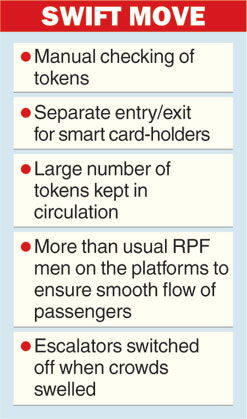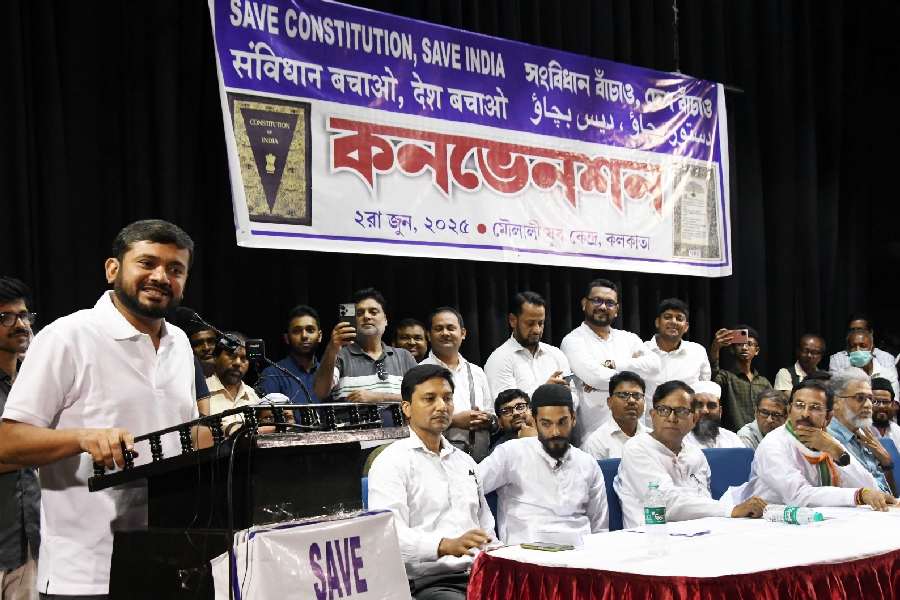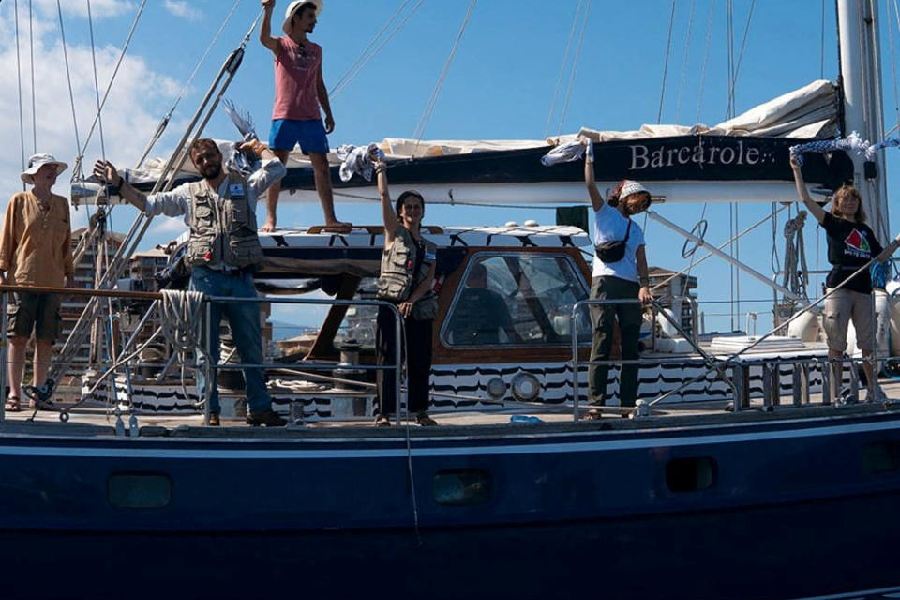March 5: Riverbank regulars spotted a white man in red trousers walking along the ghats on Sunday morning, stopping at every few steps to soak in the atmosphere or to look at the expanse of water.
Regeneration architect and Bristol's first elected mayor George Ferguson traversed the length of the Hooghly from Judges Ghat to Ramchandra Goenka Ghat. His observation: no planning, too many barriers, but overall an "assault on the senses, colours, taste".
"Do they really do much? Do they stop people?" Ferguson wondered as he eyed the railings, which he admitted were "a bit of British inheritance" along the ghats, adding: "Education is more important than railings."
A little ahead, when Ferguson came across wide clay embankments dumped with garbage, he had some advice to offer. "You could use timber boards to keep the clay away and have walkways at different levels. The lowest level could be the sacrificial land which will get flooded at high tide."
Ferguson is the man behind the transformation of the Bristol harbourside into a recreation centre. Bristol was declared the European Green Capital in 2015. "When the shipping industry was closing down, I bought old cranes at scrap rate and resold them to the local administration to raise money for protests against closure of the docklands. I was a student then," he remembered. The old cranes are now exhibits of industrial heritage.
"We have redeveloped the Avon and Frome harbourside into a honey pot. We have turned old factory sheds into entertainment zones. The harbour in Bristol is full of restaurants and music," he said.
Ferguson, who sports a pair of red trousers at all times to bring out the rebel in him, loved the trains chugging along the Circular Railway tracks and was all for expanding the ferry service on the Hooghly.
Asked if recreating the London Eye on the Hooghly riverfront, a pet project of the chief minister, would be a good idea, Ferguson said: "The whole point of London Eye was to give a glimpse of historic London. The location is important, unless you are looking down on something interesting, there is no point at all."
What caught the former Bristol mayor's eyes next were the highrises on the western bank of the Hooghly. "Don't think there was anything strategic about those," he mulled, quick to add he wasn't against skyscrapers on the riverfront. "There could be a density of buildings around transport hubs, for example."
The Corinthian columns of Babughat reminded Ferguson of Varanasi, from where he had taken a train to Calcutta in 1988. "I walked the whole length of Howrah bridge with my backpack and was fascinated by the mass of traders. It was almost visceral. But it was such a good way to arrive in the city."
At Mutty Lal Seal Ghat, the architect was fascinated by the derelict overbridge with clothes hanging that made it a "a living space". He was also taken in by the red brick warehouses and urged "not to sweep away the industrial past as it is a part of history". His prescription for the derelict yet structurally sound buildings: "It wouldn't be bad to have people living here. It could be used as an artists' colony."
A passionate heritage restorer, Ferguson shared how he saved the Tobacco Factory, a small part of the erstwhile Imperial Tobacco Co Estate that had the popular WD&HO WILLS brand, from demolition and turned it into a Theatre.
Watching scores of people bathing in the Hooghly, Ferguson suggested, "You could have piers with... a floating swimming pool, for example." At the Ramchandra Goenka Ghat, Ferguson was greeted with a "battle of smells", the fragrance of fresh flowers versus the stench of urine.
As he ambled into Millennium Park, Ferguson was impressed by its cleanliness but wondered why there weren't more cafes. His tips for riverfront development included water sports and recreation facilities such as sailing and cycling.
"There is huge potential here which could be wrecked if it was only commercial development. It would be a pity to sweep away the ghats. You have to develop the waterfront as recreational living, working and creative industry. The development will have to an incremental development. Bristol developed over the last 30 years," he signed off.
A WALK DOWN THE RIVERFRONT
George Ferguson, known for his leading role in the regeneration of the Bedminster area of south Bristol, spent Sunday morning on the Hooghly riverfront












